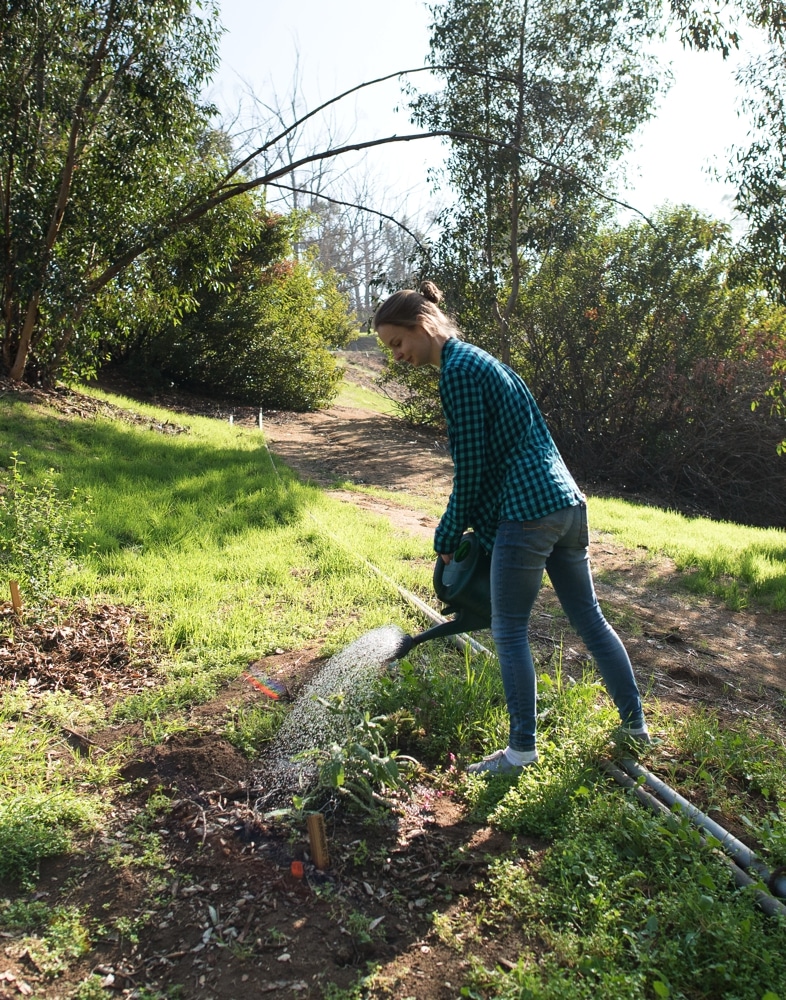
The Food, Energy and Sustainability Team (FEAST) received $2,735 — $735 in donations from a GiveCampus campaign and $2,000 as a grant from the ASOC Renewable Energy & Sustainability Fund — to restore Mount Fiji. While restoration has already begun at a few sites, FEAST is planning a large-scale community planting event next month in collaboration with Biology Club, Beekeeping Club and Pre-Health Student Association.
According to FEAST Director Diego Zapata (junior), Fiji’s 40 acres constitute the largest plot of undeveloped land in Northeast Los Angeles.
“Tapping into the underutilized resource of land by greening it is something that I feel is really awesome and important for students to be a part of,” Zapata said.

Other than one fenced-off building leased to Verizon Wireless, Fiji is entirely college-owned, granting faculty members such as biology professor Gretchen North easy access to the land. North, who specializes in plant ecology, takes her students to Fiji to measure plant diversity and collect samples.
“We’re very careful, of course, not to pick anything that seems endangered or threatened, although I can assure you there’s really nothing endangered or threatened because it would have disappeared long ago,” North said.
North recalled previous students’ restoration attempts, noting that none of the planted species survived. Some succumbed to long-term drought; others were dug up by ground squirrels. But North is optimistic that Zapata’s restoration will take root, especially with the aid of Grounds Supervisor Thomas Walters, who is helping set up an irrigation system for the restoration sites.
“I’m tapping into the closest irrigation area so that they can have at least some temporary water access to get the project going,” Walters said. “I want to be hands-off because it’s not my project, but just supportive and helpful in any way that I can.”
Since Walters’ background is in ecological restoration, including erosion control and reforestation, he has been able to advise Zapata on how to approach the Fiji restoration project. He is also able to provide some support from grounds staff. Although FEAST’s operations are entirely student-run, they sometimes rely on grounds staff for assistance with moving high volumes of material.
“I’m fairly adept at organization and logistics, so I try to just accommodate any requests or anything that I can, mixed in with the ways that we are already moving around and doing our regular work duties on campus,” Walters said.
Last semester, Anna Yung (senior) was a student in UEP 246, Sustainable Oxy: Campus Greening, a two-unit course taught by UEPI Program Coordinator and FEAST faculty adviser Megan Bomba. As her project for that class, she worked with five other students to research and plan the Fiji restoration project under the guidance of Zapata.
“[Zapata] kind of had this vision in his mind that a part of Fiji that’s really unseen, it’s like behind the Greek Bowl, he wanted to restore it and kind of make a more aesthetically pleasing environment but also a more sustainable and interactive space on campus,” Yung said.
On the suggestion of their professor, Yung and her classmates selected plants from the Theodore Payne Foundation for Wild Flowers and Native Plants. They made sure to choose native species that could thrive in a dry hillside environment.
“You see a lot of grass everywhere [on campus], and it’s not really conducive to the weather of Southern California. It takes up a lot of water and things like that,” Yung said. “Whereas the plants that we implemented in the space, they’re far more drought resistant. You don’t need so much water and they’re, in a way, more self-sufficient.”
To cut down future costs, FEAST will be propagating the native species themselves rather than purchasing grown plants, which Zapata said sell for about $8 each.
North identified a few key factors in the success of the restoration. First, the right material must be planted at the right time, ideally during the rainy season. Then, the newly-planted land must be irrigated for the first year until the plants are established. Eliminating weeds is also critical to the regrowth of the native plants, according to North, since the most abundant species on Fiji are invasive grasses and other short-lived weedy species.
“Native plants need to be irrigated and maintained for approximately a year before they are established,” Zapata said. “But once they establish that deep root system and pretty much have the lay of the land, there’s no upkeep, which is the beauty of restoring Fiji.”
![]()


































